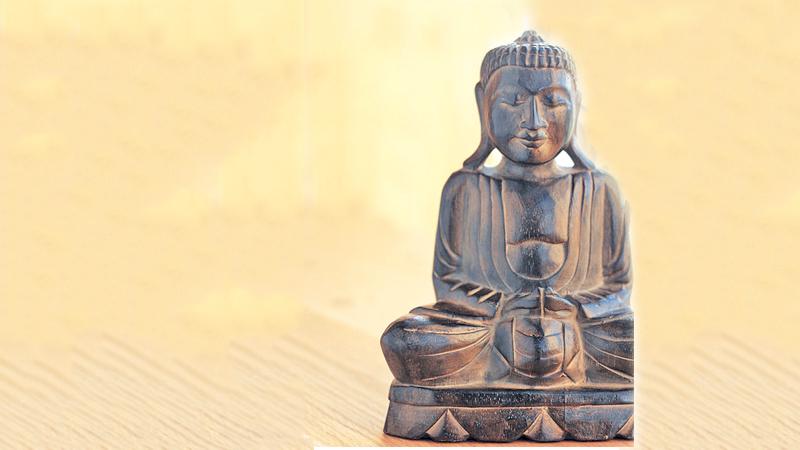
Celebrated Psychologists like Carl Jung, William James and many others have understood the value of Buddhist philosophy and its positive impact on mental health. Their research programs have highlighted the importance of Buddhist psychotherapy in the treatment of depression, anxiety, factitious and addiction disorders, medically unexplained symptoms and various other psychological ailments. It is now increasingly used in psychotherapeutic practice in the western world.
Modern society has imposed many strains on human beings, and those in the psychological realm are perhaps among the most serious. As declared by the Buddha and emphasized by William James, the realities of the mind are more important than the realities of the body. Hence the significance of mental health and mental therapy as advocated in Buddhism has been recognised today by professionals.
Mindfulness
Historically, the Buddha was the first religious leader in the world to draw a distinction between physical and mental illness. According to the Buddha, it is hard to find a perfectly healthy person physically; it is harder still to find a person completely sound and healthy mentally.
Buddhist psychotherapy stresses the value of mindfulness and meditation. Instead of talking long hours about a mental problem with a psychotherapist until it virtually takes over one’s consciousness, the Buddhist therapy tries to help the individual to awaken to his or her true nature, even if it means living outside of social convention. This is where Western and Buddhist psychotherapy differ.
The goal of Buddhist psychotherapy is enlightenment – seeing things and situations as they are and the perfection of emotions into compassions. There is an analogy which aptly points out the basic difference between Western and Buddhist psychotherapy. While Western psychotherapy is like watering and pruning a plant so that it would have a nice shape and colourful flowers, Buddhist psychotherapy goes a little further by treating the root of the plant.
Points of overlap
Since mid-20th century, Buddhist teachings have begun to be attractive for those western psychologists who are trying to understand the various states of consciousness occurring outside the regular everyday experience.
Buddhist psychology has two therapeutic goals: the healthy and virtuous life of a householder (harmonious living) and the ultimate goal of nirvana, the total cessation of dissatisfaction and suffering (dukkha).
Buddhism and the modern discipline of psychology have multiple parallels and points of overlap. This includes a descriptive phenomenology of mental states, emotions and behaviours as well as theories of perception and unconscious mental factors. Psychotherapists such as Erich Fromm have found in Buddhist enlightenment experiences the potential for transformation, healing and finding existential meaning. Some contemporary mental-health practitioners such as Jon Kabat-Zinn increasingly found ancient Buddhist practices (such as the development of mindfulness) of empirically proven therapeutic value, while Buddhist teachers such as Jack Kornfield saw Western psychology as providing complementary practices for Buddhists.
Carl Rogers, an influential American psychologist, was among the founders of the Humanistic approach to psychology. He is widely considered to be a founding father of psychotherapy research and was honoured for his pioneering research with the highest award by the American Psychological Association in 1956. Rogers was fascinated by the Buddhist approach to life and did an indepth study of the meditation systems.
Sati-therapy
He later developed what is known as Sati-therapy. It is a system of integrative psychotherapy, which uses mindfulness (sati) as the key principle within a person-centred approach. It integrates with the procedures of Buddhist insight meditation (satipatthana-vipassana) for therapeutic treatment. In the training of sati-therapists, the conceptual frame of Western mainstream psychology is used, yet the theoretical basis for Sati-therapy is provided by the system of psychology and ethics elaborated within the teachings of Buddha.
Sati-therapy is a healing treatment, a methodical cure for psychological, social, and spiritual problems. The psychotherapist is just a specialist chartered to accompany the patient in the healing process. Sati-therapy is not a religious performance. It may use the patient’s religious sentiments, whether Buddhist or otherwise, without any coercive persuasion or missionary influencing. The religious issues are subject to the patient’s own decision.
Buddhist Psychotherapy differs from many western psychologies in that it concerns itself with human potential rather than human pathology. When you experience problems with living, it doesn’t find you in need of fixing. Instead, Buddhist Psychotherapy views all suffering as an opportunity for growth and change.
Just like the earlier paths providing a foundation for later paths, the later ones often support the earlier ones. For example, a degree of samatha meditation, a primary version of concentration, is essential for developing mindfulness. The pacification of the mind is important to mindfulness practice.
Most therapists know that anxiety is the commonest manifestation of psychological suffering. When it’s not anxiety, it’s unresolved anger. And when it’s not anger, it’s pervasive sadness. All three of these can be toned down to a manageable level by simple meditation. Meditation will not eliminate these problems - that requires wisdom and morality and the entire program - but it would give the sufferer a chance to acquire the wisdom.
Coleman
The famous American Psychologist Daniel Coleman, talked with American Science Magazine a few years ago about the increasing use of Buddhist practices in psychotherapy. He says:
“Definitely, no other religion or spiritual practice has explored the structure of the mind so carefully as Buddhism. With a precision that approaches the rigour of the best scientific taxonomies, Buddhists have dissected and re-dissected the mind, generating a catalogue of “mental afflictions” (figuratively citing as many as 84,000) that lead to inner transformation as afflictions are overcome. The top five - hatred, desire, confusion, pride and jealousy - are comparable, though certainly not identical, to the destructive mental states identified in the West. The thoroughness of the Buddhist approach to understanding the mind, and the apparent peace of mind enjoyed by Buddhist monks, has attracted Western scientists hoping to shed further light on the neurobiology of emotions and new pathways to mental health”.
